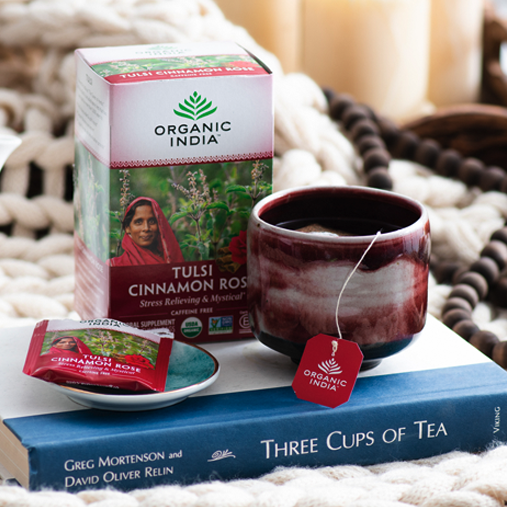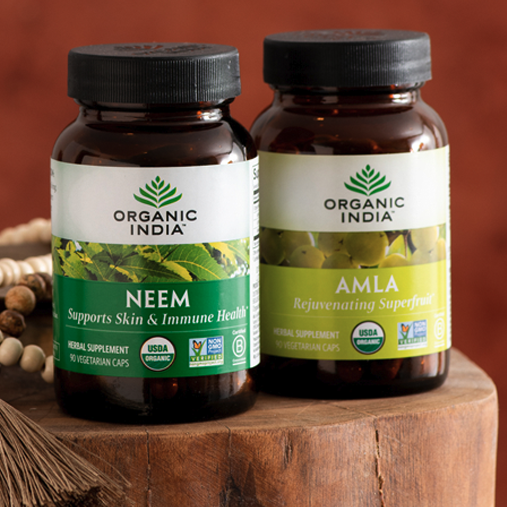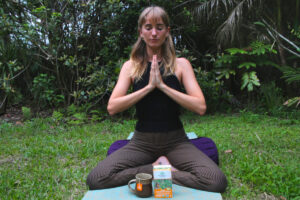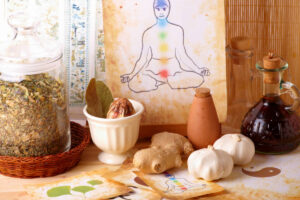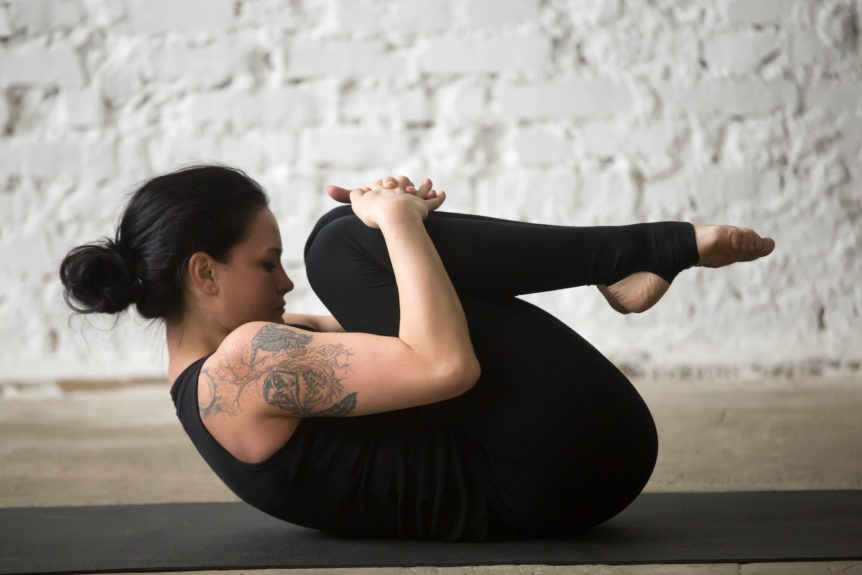Back
When we become conscious of the totality of life through the practice of yoga, we can become aware of the relationship between stress and the state of relaxation. This is why yogis teach their students to cultivate an awareness of their bodies and the movement of breath. Learning a few poses (or asanas) will go a long way toward nourish serenity — physically, mentally, emotionally, and spiritually.
Balancing Body and Mind
Ishwar V. Basavaraddi, director of Morarji Desai National Institute of Yoga, India, writes that there is both an art and a science to yoga. The science of yoga recognizes the same fundamental philosophy as modern-day physicists have discovered — that everything in the universe is a manifestation of the same quantum firmament. Yoga is a way of moving away from the material expressions of life and back to the source. As the sense of self becomes quiet, the power of observation intensifies, and we can see where stress is held in your body and mind. In simpler terms, practicing yoga leads to a more balanced, peaceful, loving life.
“Yoga,” wrote columnist Sarah Jones, “enables us to enter a state of deep calm and reflection, otherwise absent in the maddening world of the urban jungles we now call home. More and more people are realizing the importance of embracing time alone and treating and regenerating yourself — and don’t we all love some me-time?”
The Rhythm of the Body and Melody of the Mind
Bodybuilding legend Arnold Schwartzennegger famously said, “Where the mind goes, the body follows,” which is an apt idea to remember in everything you do. But where other pursuits may have adopted this philosophy to fit the sport, yoga arose out of it. Yoga guru BKS Iyengar taught, “Yoga is like music. The rhythm of the body, the melody of the mind, and the harmony of the soul creates the symphony of life.” When we consider our own states of stress, we may find that we are simply out of rhythm. Yoga can help you reunite with yourself.
Practicing Yoga for Stress Reduction
Of course, the benefits of yoga go far beyond reducing stress, but it should be noted that the discipline is highly regarded as a meditative exercise. Even if you’re focused only on finding more inner peace and dealing with life’s oppressive problems, repeated yoga practice is bound to expand your horizons in various ways — from strengthening the body to finding balance, and from increasing your awareness to discovering a sense of connection between your body and mind.
And don’t worry — you’ll still gain plenty of benefits without having expertise. But, like with all arts and exercises, a qualified teacher can help you get the most out of your practice, helping you refine your movements and build a rewarding routine.
The 5 Asanas
The following five poses may help with stress, but before you get into them, remember that yoga is a holistic practice. As such, it’s important to pay attention to your mental state as much as your physical movements. Yoga is a fluid exercise, meaning that the asanas outlined below are performed within the context of an overall practice that combines states of contraction, expansion, and rest. Whether you’re practicing yoga with a friend, in front of an online teacher, or in class, remember to pay attention to how your body feels, where you hold tension/stress, and how it feels to be in a state of relaxation. Notice how each posture carries with it a different feeling, and how your body and mind respond to that pose.
1. The Lotus Pose
You’re likely familiar with the Lotus position as the traditional cross-legged posture. This is perhaps the most iconic of positions in yoga, as it has been used for millennia by meditation practitioners, and is the universal symbol for spirituality — it is thought to maintain a connection between the earth, the human form, and the heavens, in the same way the lotus plant springs from the muddy earth and rises to the universal light. This posture provides the opportunity for the mind to become quiescent, as it remains aware without effort.
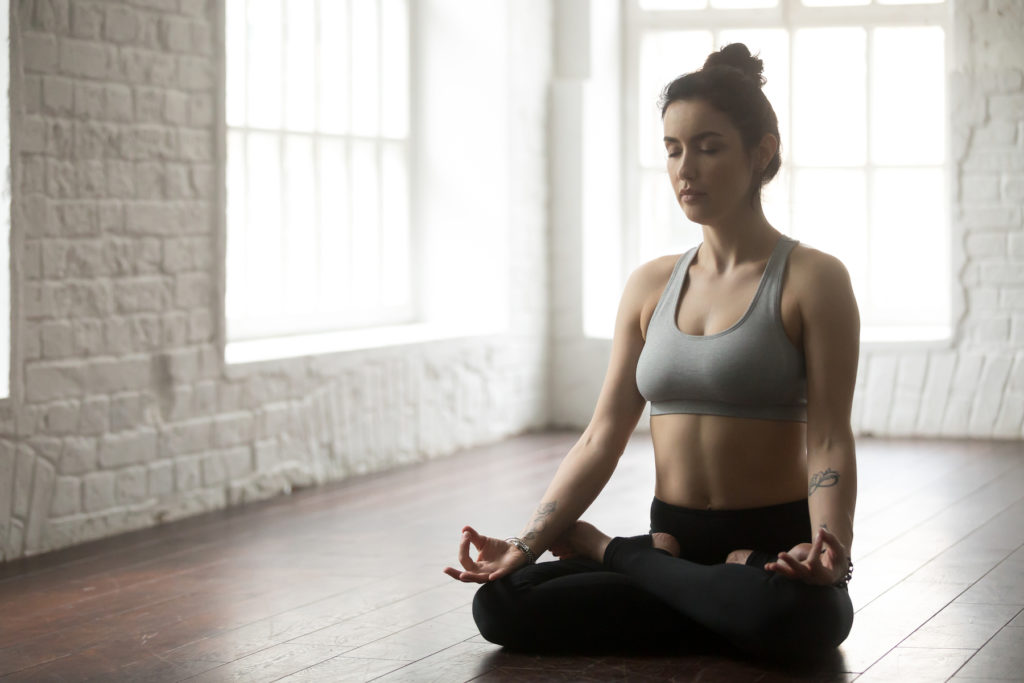
2. Knee to Chest Pose — Apanasana
This pose represents the return home, to a place of comfort and inner nourishment, according to the authors of Yoga Toolbox for Teachers and Students. This asana helps alleviate stress-related conditions and cultivates purification and release. As a beginner’s pose, Apanasana allows you to unwind and relax, especially after a long day, when the legs feel painful and heavy.
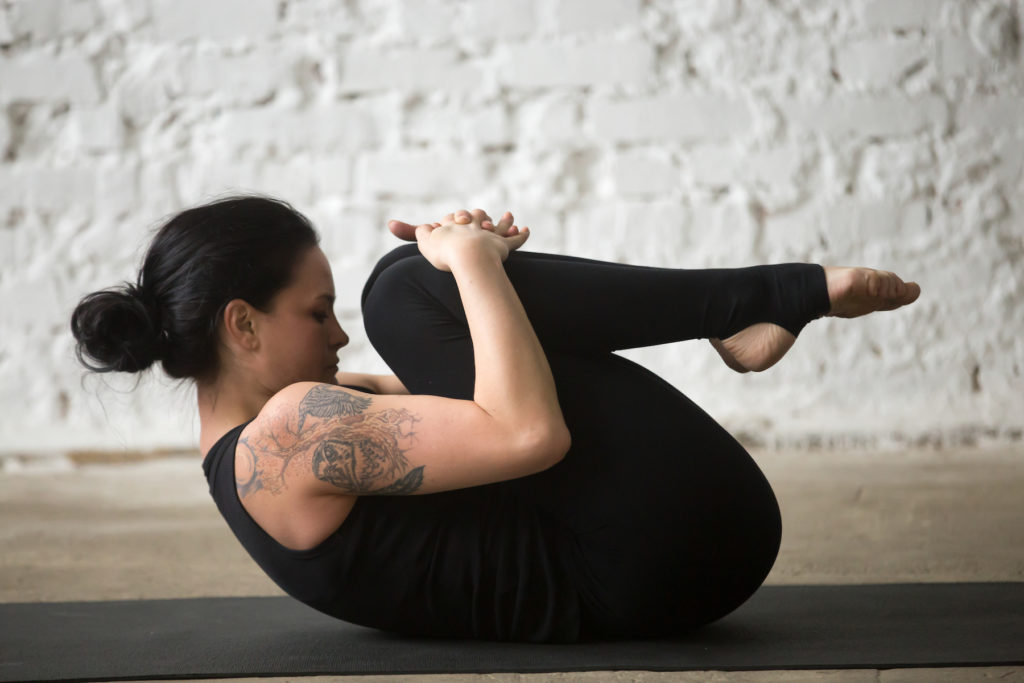
3. Plow Pose — Halasana
This asana may be a bit difficult for the beginner to accomplish, so if you’re just starting out, try working up to it through the relaxation and flexibility that comes with time and practice. The editors of Yoga Journal write that Plow Pose calms the brain, stimulates the abdominal organs and the thyroid gland, stretches the shoulders and spine, and reduces stress and fatigue.
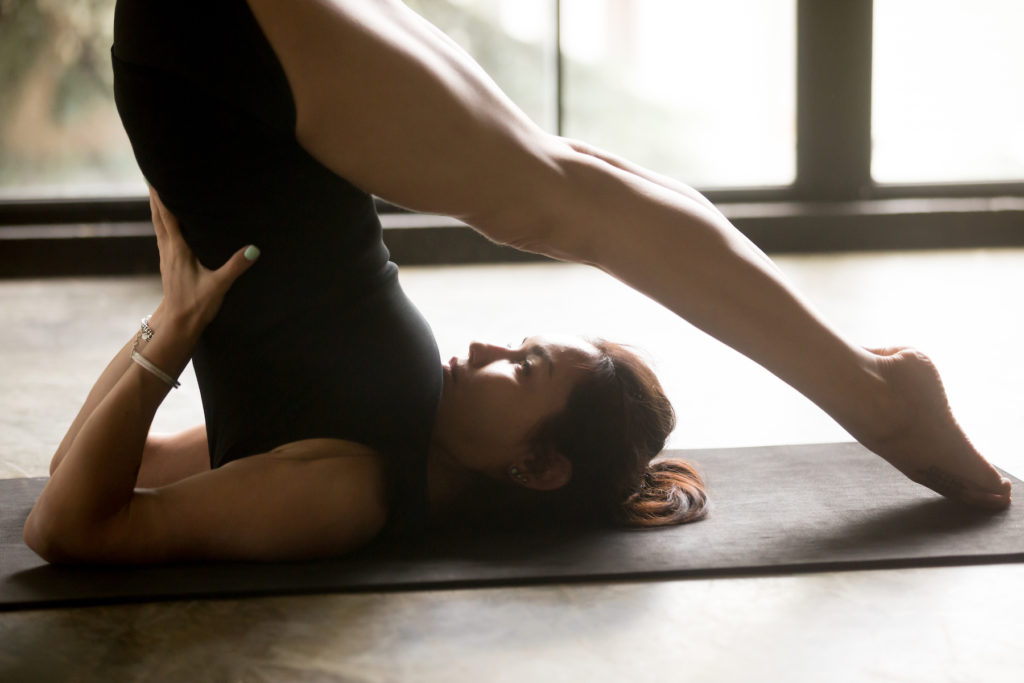
4. Child’s Pose — Garbhasana
This posture is one of rest, metaphoric of the divine womb of creation, out of which the entire universe arises. Child’s pose brings our attention inward to recognize our own potential for restoration. International yoga teacher and author Subodh Gupta writes that this pose is so powerfully relaxing that after only a couple of minutes, it’s common to feel as if you are half asleep.

5. Corpse Pose — Shavasana
This posture, commonly assumed at the end of yoga practice, is as relaxing as it is symbolic of the death of attachment to the egoic self, releasing you from the limitations of the body. Simona Sebastian, founder of Chakra-Anatomy.com, explains that “when you are fully present in the moment, connected with the earth, the ground, the crown chakra will begin to align with all other seven chakras and energy can flow smoothly through your subtle body.”
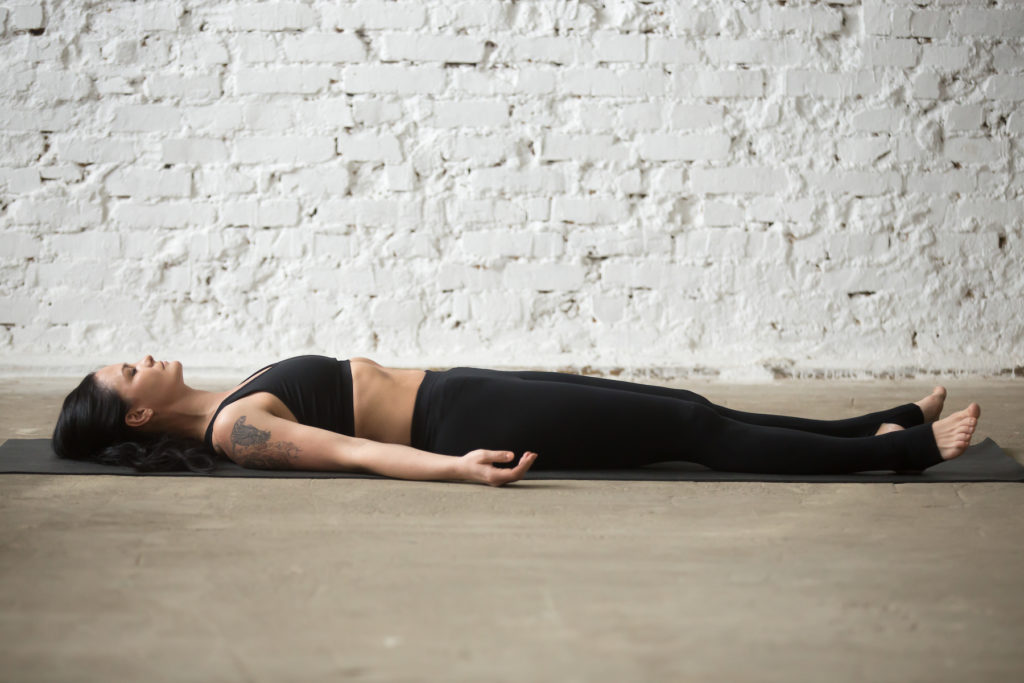
Minding the Body
The way yoga is now most commonly practiced around the world is relatively new. Yoga expert Sadie Nadini explains, “Yoga philosophy and directives about how to embark on a personal path of self-realization have been here for thousands of years. But a specific, holistic
yoga practice of physical and spiritual fitness simply didn’t exist before about 200 years ago.” Nadini is referring to the early 1900s, and decades to follow, when yoga guru Krishnamacharya and his world-famous students, B.K.S. Iyengar and Pattabhi Jois, created their own systems of practice by incorporating gymnastics, stretching exercises, and other types of physical fitness.
Today’s yoga is a fusion of ancient spiritual practice with a system of postures and movements that build flexibility, muscle tone, balance, and vigor. It can never be repeated enough, however, that all exercises come with a word of caution: Consult your doctor to make sure the exercise is right for you, and find a good teacher to help you get the most out of your practice and avoid injury or strain. The deeper you go into yoga, as millions around the world have discovered, the freer your mind and body become of stress and other mind-body imbalances.

